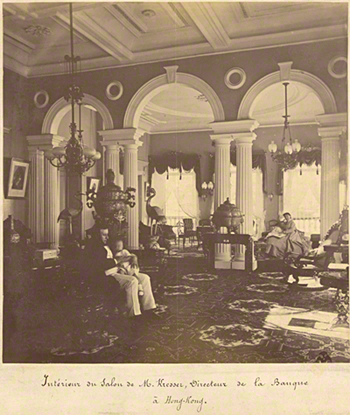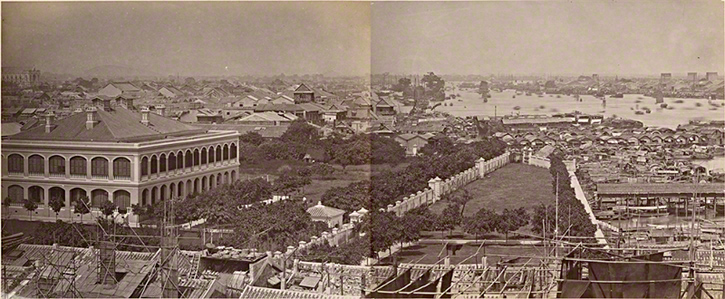
Gateways & Transitions
China traded with Europe for centuries; however, foreigners were only permitted to exchange goods in a limited way from the southern city of Canton (Guangzhou).

In the early 1840s Great Britain defeated China militarily in the First Opium War (1839–42). As a result, China agreed to Britain's creation of a colony in Hong Kong and allowed British companies to establish commercial footholds in five other Chinese cities: Canton (Guangzhou), Amoy (Xiamen), Foochow (Fuzhou), Ningbo, and Shanghai. These so-called treaty ports became gateways through which ideas and goods flowed both into and out of China. Meanwhile, Britain and other European countries expanded the treaty-port system, permitting them to exact ever-greater concessions from an increasingly fragile Qing empire.
Enterprising photographers documented the expansion of these political and economic activities in Chinese cities that were experiencing cataclysmic transitions. Sweeping panoramas showed European-sponsored buildings—churches, customs offices, residences, and warehouses—that contrasted with more traditional Chinese architecture. Photographers marketed their wares and honed their skills in the context of these commercial gateways and cultural transformations.



